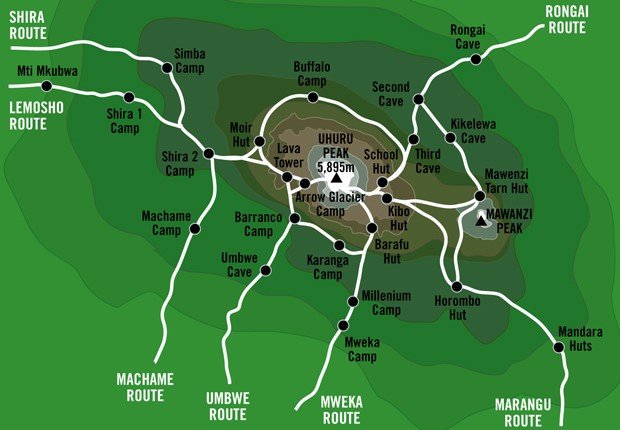Mount kilimanjaro, kilimanjaro climbing
Mount Kilimanjaro is a symbol of the compelling beauty of East Africa. Not only is Kilimanjaro the highest peak on the African continent; it is also the tallest free-standing mountain in the world, rising in breathtaking isolation from the surrounding coastal scrubland to an imperious 5,895 metres (19,340ft).
Kilimanjaro is one of the world’s most accessible high summits, a beacon for trekkers from around the world. Most climbers reach the crater rim with little more than a walking stick, proper clothing and determination. Those who reach Uhuru Peak, the actual summit, or Gillman’s Point on the lip of the crater, will have earned their climbing certificates.
Climbing Mount Kilimanjaro
There is so much more to Kilimanjaro than her summit. The ascent of the slopes is a virtual climatic world tour, from the tropics to the Arctic.
Even before you cross the national park boundary (at the 2,700m contour), the cultivated foot slopes give way to lush montane forest, inhabited by elusive elephant, buffalo, the endangered Abbot’s duiker, and other small antelope and primates. Higher still lies the moorland zone, where a cover of giant heather is studded with otherworldly giant lobelias.
Above 4,000m, a surreal alpine desert supports little life other than a few hardy mosses and lichen. Then, finally, the last vestigial vegetation gives way to a winter wonderland of ice and snow – and the magnificent beauty of the roof of the continent.
Mount Kilimanjaro Quick Facts
- Height: 5,895 m
- Size: 100 km x 65 km
- Location: Tanzania, near Kenyan boarder in East Africa
- Volcanoes: Kibo, Mawenzi, Shira
- Eco Systems: Bushland, Forest, Heath, Alpine, Arctic
- Nearby Cities: Moshi, Arusha
- Nearby Airport: Kilimanjaro International Airport
